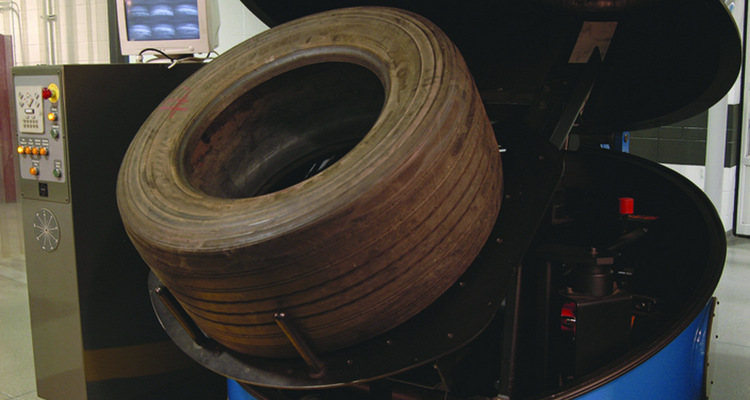“We were ‘green’ before it was cool,” proclaimed Randy Hanson, technical training manager, training and development, Bridgestone Commercial Solutions at its training center located within Bridgestone Americas’ LaVergne, Tenn., manufacturing facility. A 13-year veteran with Bandag, Hanson served as a field service rep become assuming the important and influential training role.
With the genuine passion of a new-hire and the obvious commitment of a ‘professor’ educating his students (customers), Hanson knows tires and retreads like an internist knows body’s organs.
“A casing can still be good long after tire tread wear. Just because a tread wears down doesn’t mean the casing’s worn too. A quality casing has a life span that can outlive the original tread,” he said, noting Bandag’s unique ‘cold process’ to cure the tire—“high temperature can decrease life and retread quality”.
Throughout its entire production system (original equipment and retread tires), the company practices quality assurance and remains focused on casing durability, not just for the new tire’s benefit, but the retreadability.
The entire retread life space starts and ends with tires that perform like new tires, at a fraction of the price. With specialized tread patterns that match up with any terrain, any application, the retreads, according to Hanson, employ next-generation compounds that resist wear and tear, earning fleets more mileage and life.
Bandag offers a two-day training class for fleets and dealers, with Hanson leading the sessions. More than 400 customers—mechanics, drivers, technicians, shop managers—were trained last year.
“Fleets tell us we don’t want any [tire] failures. I know there are lots of tire clinics, but this is the best one in that it teaches tires from A to Z. Our students feel strongly about what they learn, and some even come back for refresher courses to grasp the full benefits of retreads,” offered Hanson.
A couple of common tire myths: 1.) the rubber on the side of the highway comes from retreads—those ‘gators’ on the road with all the wire are usually not retreads. Virtually all that scrap rubber contains wire. There’s no wire in the rubber retreaders use. 2.) Retreads are not safe—nearly every major airline uses retreads. Even sophisticated jet fighters use them. Today’s modern retreads are so safe, school bus fleets depend on them.
“Retreads are a good, smart option for carriers seeking to extend tire life,” said Bert Jones, manager, product marketing Bridgestone Commercial Solutions. “The biggest and the best fleets use retreads to save money and keep costs to a minimum.”
Hanson walked through the entire Bandag retread process. From the seven-point inspection and electricity testing on the casing, to the testing and repairs with an advanced, proprietary retread compound, to buffing-skiving, extruding, building and finally, chamber curing time.
From the customer training classes, Hanson, noting Bandag’s global network of servicing dealers, offered these real-life tire life extending suggestions:
1. Proper tire pressure: Low pressure can kill the casing. Be sure to check pressure when it’s cool, at least 4 hours non-running. A tire can lose up to 2 PSI a month, even if things are right. Tip: Use metal-screw valve caps.
2. Tire maintenance: Establish a formal program to inspect, inflate, review, and chart the tire lives and complete inventory. Don’t store tires outside, since direct heat can inflict damage. Pay attention to aligning the proper width of the tire to the wheel.
3. Vehicle alignment: The vehicle’s true alignment can be a big factor in tire life. Fleets should ensure tires are matched properly before positioning on the vehicle.
4. Train the drivers: A properly-trained driver will heed the speed, They can make as much as 35% difference in fuel economy.
“Retreading makes a truer, rounder tire, and definitely has a new tire look,” he added.














